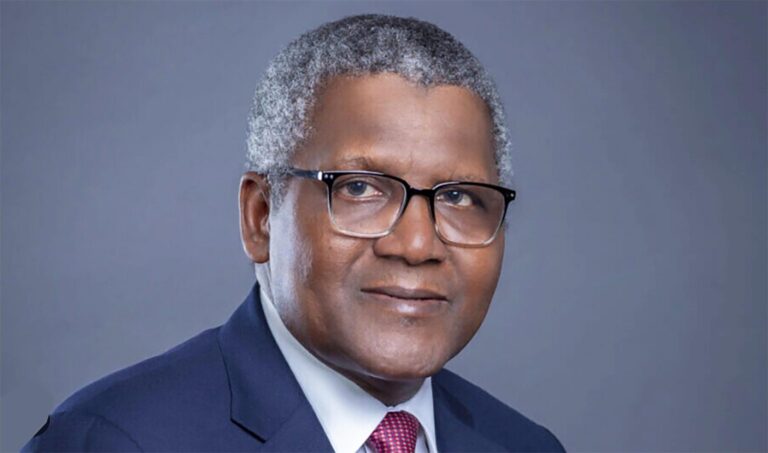Although the ‘igba-boi’ traditional apprenticeship system of the Igbo ethnic group in Nigeria appears to be the most efficient globally, other African countries equally have productive systems of apprenticeship that are worth appreciating. While virtually every culture seemingly has a unique apprenticeship system for transferring skills and aptitudes, we shall limit this discussion to only a few. For Nigeria, we shall present the Yoruba and Igbo apprenticeship systems. For the rest of the West African region, we shall have brief coverage of Ghana and Senegal. Other countries that we make this high-level cross-country review of the apprenticeship system outside of West Africa comprises South Africa, Benin, Mauritius, Madagascar, and Uganda. Countries such as Ghana, Senegal, Mali, and South Africa are already considering the integration of their apprenticeship models into their country’s formal education system. Where possible, we briefly reviewed each of the country’s models in terms of their apprentice engagement requirements namely, the indenture process, fees paid, duration of the apprenticeship, methods of skill transfer, and how qualified apprentices settle after their acquired trade.
The apprenticeship system in Mauritius dates to February 1835 following an act of the British Parliament which converted the status of slaves working in plantation colonies to apprentices. Freed slaves were to work for a period under the previous master as apprentices before becoming completely free. In his 1978 review of the apprenticeship system in Mauritius, Moses Nwulia noted that the period of apprenticeship strengthened rather than weakened the old patterns of master-servant relationships that existed during the slave era. Today, the apprenticeship scheme in Mauritius has become tightly integrated with national skill development and employment policies. In 1996, the Mauritius Institute of Training and Development (MITD) introduced an apprenticeship scheme based on the German dual-track system. 20% was devoted to a theoretical appreciation of the apprenticeship learning scheme within any of the MITD institutions of technical and vocational education training, while 80% was on the acquisition of practical skills in various organizations. The duration of the apprenticeship was typically between one and two years after which the apprentice earns a National Trade Certificate. Organizations employing the trainees also paid a monthly allowance of about 50% of the minimum wage. Currently, the country has a National Skills Development Program [NSDP] designed to ensure that the youth acquire the right set of skills for working in various industry sectors. Choice of expertise pursued by the apprentices depends on the level of product demand in multiple industries. Apprenticeship programs in Mauritius last between three and 12 months. Trainees are also paid a monthly stipend as an incentive and travel expenses.
In Madagascar, the governance of apprenticeships depends on labour code. Two different country models influence Madagascar’s apprenticeship model. They are the Malagasy model and the PROSPERER model. The Malagasy model is 100% practical while the PROSPERER Model has about 80% practical component, while the remaining 20% is devoted to academic training. The Malagasy model has existed for many years without requiring either national or international support. The PROSPERER Model came into existence in 2008 for seven years. The goal was to promote the development of pre-existing rural micro and small enterprises administering them into value chains. The training duration is typically between six months and two years, depending on the industry. Graduating apprentices receive a certificate from the master and the Chamber of Commerce where applicable.
Somewhat like the Igbo apprenticeship system, the traditional Yoruba variant stands on a system of binding agreements with two critical elements, namely finance and duration. Details of the treaty determine the nature of the socioeconomic relationship between the master and the intended learner. The first aspect of the contract defines the length of time that the learner will be under the full guidance of the master. The financial agreement establishes the amount of money that the learner/Guardian of the learner will have to pay to undergo the tutelage. One significant difference between the Igbo and the Yoruba system lies in the seriousness of this agreement. In the former, it is sufficient to have a verbal understanding of these issues. In the latter, these two crucial building blocks must be documented and signed by both parties. Secondly, the traditional Igbo apprenticeship system usually does not require that the apprentice pays any money to the intended master before admission.
The dominant apprenticeship model in Ghana and the Yoruba ethnic group in Nigeria are practically the same. The minimum condition is a written or oral indenture between the would-be apprentice [usually represented by their parents or Guardian, and the master or mistress. Any interested person can be an apprentice if he/she can pay the training fee. The financial aspect of the indenture covers the training fee, apprentice’s wages [if agreed by both parties, and work expectations. The duration of apprenticeship in Ghana is approximately three years. Traditional apprenticeship system remains a critical alternative to formal education in Ghana. In the 2009 paper titled “formalizing the informal: Ghana’s national apprenticeship program” published in the Journal of vocational education and training, Palmer R. wrote that “Presently, non-formal apprenticeships training accounts for 80-90% of all skills training in Ghana, compared with 5-10% from public training institutes, and 10-15% from NGOs (Palmer 2009)” Similarly, in a 2008 survey of apprenticeship system conducted by Monk, Sandefur and Teal of the Department of economics at the Oxford University published in the paper titled “those doing an apprenticeship payoff? Evidence from Ghana” apprentices make up nearly 25% of working-age Ghanaians and 28% of urban residents while 55% of current employees were either current or past apprentices
The Igbo apprenticeship system [igba boi] has a global reputation for its capacity for both informal skill transfer as well as the provision of the seed capital with which the graduated apprentice starts off the trade. It also provides the ‘master’ with a reasonably affordable workforce. Either the master or the family of the would-be apprentice can initiate the relationship. In most cases, the latter approaches the would-be master craftsman to learn the trade through him. If the would-be master accepts the proposal, then some agreement would be reached. This agreement covers the duration of the apprenticeship and the prospects of the master, providing some seed capital for the apprentice at the expiration of the learning. This last condition is usually the major attraction for the program. Almost 85% of apprentices look up to their master to minimally set them up after the program. The idea behind it is that the apprentice would have helped in creating an additional level of wealth throughout the apprenticeship and therefore deserves to be compensated with a fraction of the net additions to the worth of the master.
By 2013 the South African national Department of Higher Education and Training [DHET] adopted the German dual-track system of apprenticeship. The current apprenticeship system in South Africa follows a long-established arrangement German dual-track model where apprentices spend one quarter of each year on theoretical aspects of their trade in a technical and vocational education and training. The German dual-track apprenticeship system has long been in practice in Germany, Switzerland, and Austria. Several other countries such as Denmark, Holland, Hungary, and Portugal have equally adopted it.
Apprenticeship in the workshop is the most popular education channel in Senegal, where about 60% of its population is below 20 years of age. With the government struggling to cope, workshop apprenticeship is quite popular. Despite the law forbidding work at less than 15 years of age, many Senegalese children apprenticed themselves to a shop without wages early in life. Like the apprenticeship system in many other African countries, the Senegalese model provides skill transfer opportunities from an informally trained artisan with some level of expertise to an intern who learns by copying from the master. The country has a standard law that makes it obligatory to document all apprenticeship contracts. It also specifies the conditions that govern the drafting and termination of such apprenticeship contracts. This law is, however, generally ignored with a preference for moral commitments based on relationships between people in traditional communities. The role of the master craftsman in the Senegalese system is quite expensive. It sometimes comprises the education of the relations of the apprentice. Senegal’s currently modified apprenticeship system integrates both practical and theoretical learning within the workshop. Government’s support, however, is in line with their categorization based on the educational levels of the apprentices and length of training courses.
Apprenticeships in Benin are a reliable alternative to formal education, as only about 7% of students make it up to level II of secondary school. Informal learning therefore provides a secure option for dropouts that are more than 80%. The traditional apprenticeship system is consistent with that of most other African countries and stands on learning by doing or copying the master do it. The 2005 and 2010 decrees provide the legal framework for the current reforms in the system through TVET. The improvements follow a dual-track method comprising the upgrading of informal apprenticeships and the issuance of the certificate of professional qualifications. The latter occurs through international evaluation after three levels of informal training with a master craftsman. Generally, as in other countries where they are in practice, the Beninese dual-track apprenticeship model combines specific education, training, and vocational training centres with on-the-job training at the Mastercraft man’s firm.
Finally, ample evidence indicates that the informal sector apprenticeship system in the Eastern parts of Africa is not as robust as the West Africa model. Like other countries with the huge informal sector, traditional apprenticeship is the most common skill development vehicle in Uganda. The country has a youthful population made up of about 65%. A substantial fraction of this youth population [more than 60%] is unemployed. Most regular employees in Uganda appear to have received apprenticeship training earlier in their career. Several pieces of evidence indicate that fewer workers received only on-the-job training. Unlike some West African apprenticeship models in Uganda, most apprentices never paid for their training. On the other hand, they received some subsistence wages depending on the level of demand for the products they make. The duration of the apprenticeship is approximately two years on average.








